解题思路:
本题在简单问题上做了许多限制,需要使用排除法一步步导向答案。 $1+2+...+(target-1)+target$ 的计算方法主要有三种:平均计算、迭代、递归。
方法一: 平均计算 问题: 此计算必须使用 乘除法 ,因此本方法不可取,直接排除。
Java
public int mechanicalAccumulator(int target) {
return (1 + target) * target / 2;
}Python
def mechanicalAccumulator(target):
return (1 + target) * target // 2C++
int mechanicalAccumulator(int target) {
return (1 + target) * target / 2;
}方法二: 迭代 问题: 循环必须使用 $while$ 或 $for$ ,因此本方法不可取,直接排除。
Java
public int mechanicalAccumulator(int target) {
int res = 0;
for(int i = 1; i <= target; i++)
res += i;
return res;
}Python
def mechanicalAccumulator(target):
res = 0
for i in range(1, target + 1):
res += i
return resC++
int mechanicalAccumulator(int target) {
int res = 0;
for(int i = 1; i <= target; i++)
res += i;
return res;
}方法三: 递归 问题: 终止条件需要使用 $if$ ,因此本方法不可取。 思考: 除了 $if$ 和 $switch$ 等判断语句外,是否有其他方法可用来终止递归?
Java
public int mechanicalAccumulator(int target) {
if(target == 1) return 1;
target += mechanicalAccumulator(target - 1);
return target;
}Python
def mechanicalAccumulator(target):
if target == 1: return 1
target += mechanicalAccumulator(target - 1)
return targetC++
int mechanicalAccumulator(int target) {
if(target == 1) return 1;
target += mechanicalAccumulator(target - 1);
return target;
}下图中的
sumNums()对应本题的mechanicalAccumulator。
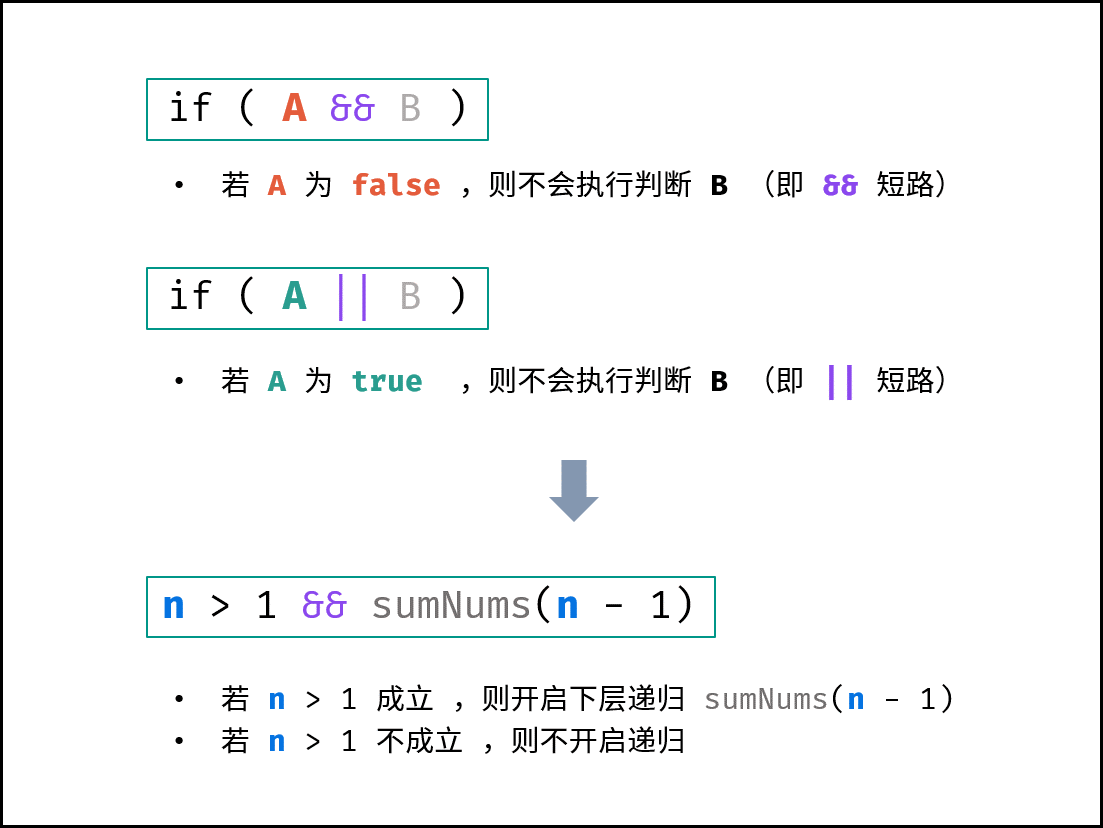
逻辑运算符的短路效应:
常见的逻辑运算符有三种,即 “与 $&&$ ”,“或 $||$ ”,“非 $!$ ” ;而其有重要的短路效应,如下所示:
Java
if(A && B) // 若 A 为 false ,则 B 的判断不会执行(即短路),直接判定 A && B 为 false
if(A || B) // 若 A 为 true ,则 B 的判断不会执行(即短路),直接判定 A || B 为 true本题需要实现 “当 $target = 1$ 时终止递归” 的需求,可通过短路效应实现。
Java
target > 1 && mechanicalAccumulator(target - 1) // 当 target = 1 时 target > 1 不成立 ,此时 “短路” ,终止后续递归<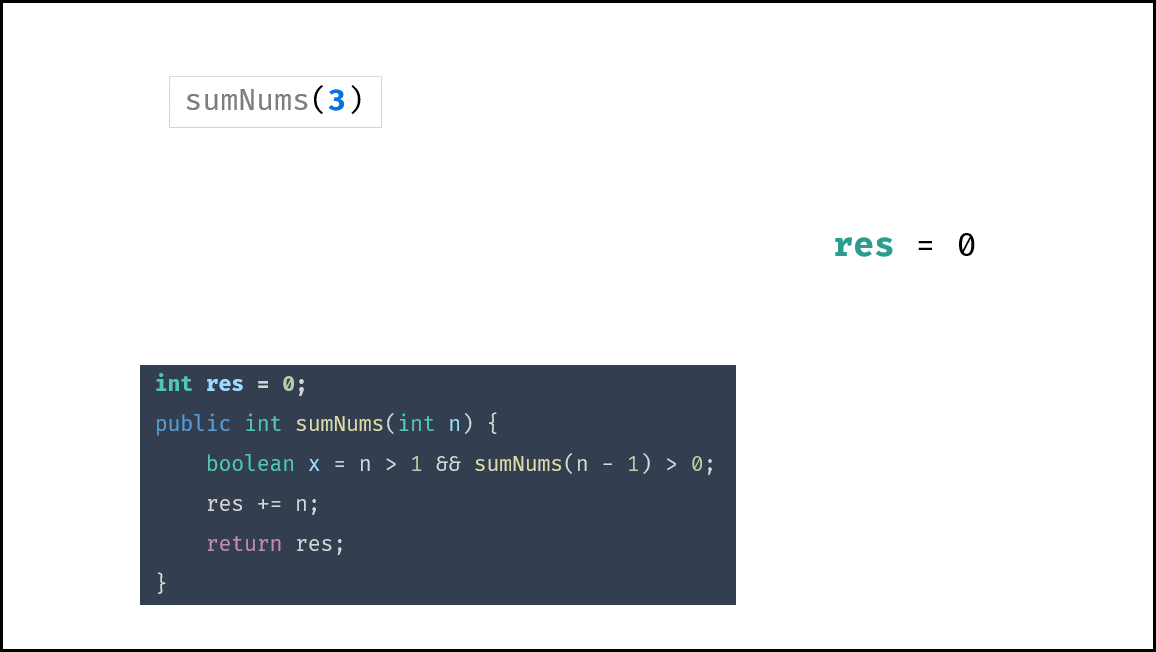 ,
,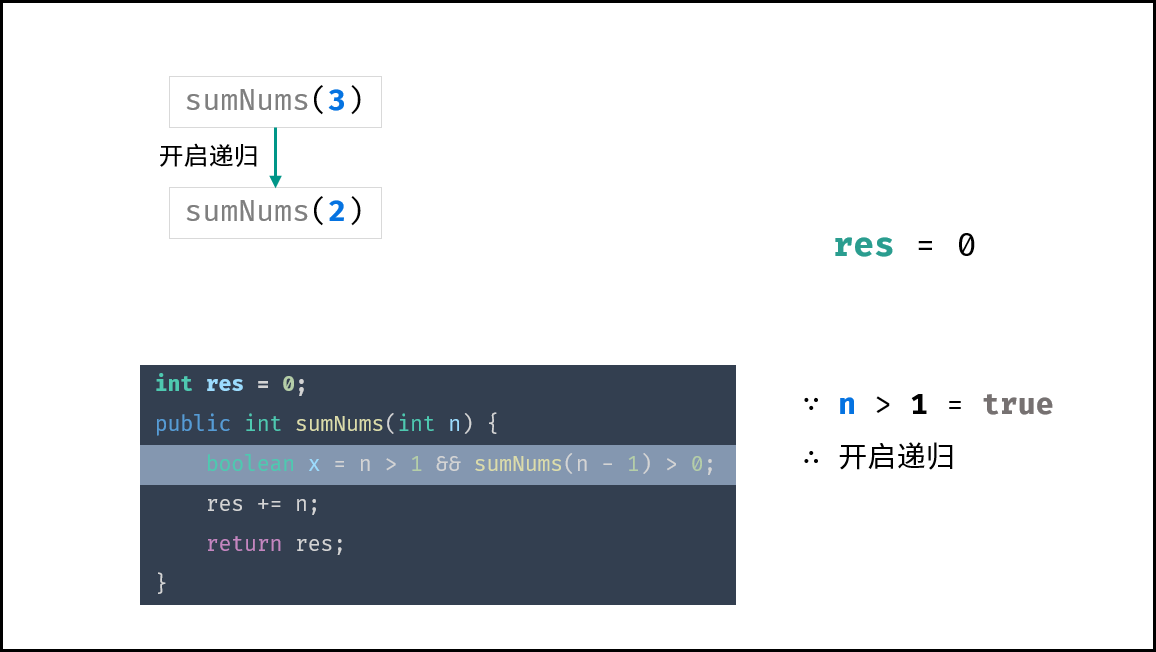 ,
,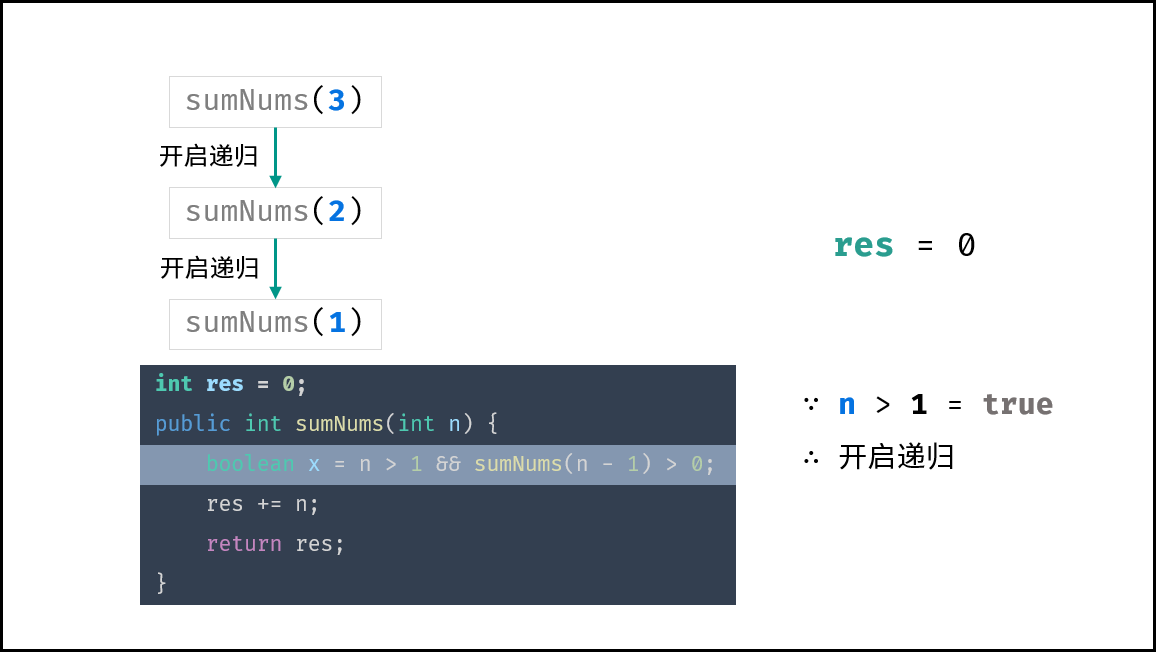 ,
,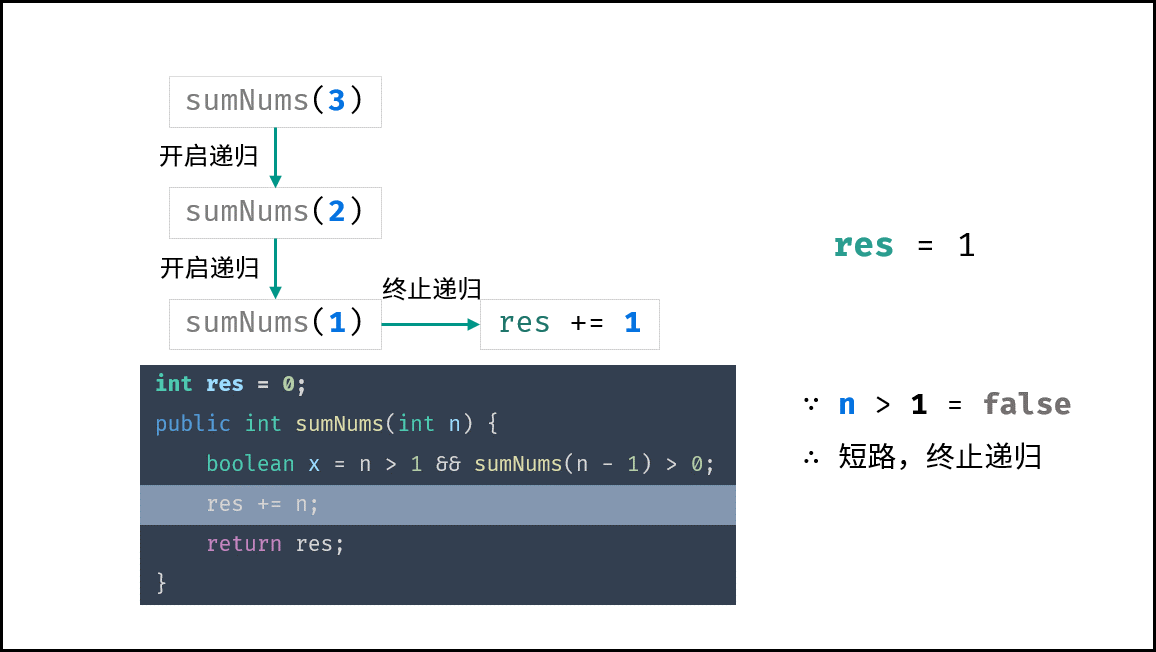 ,
,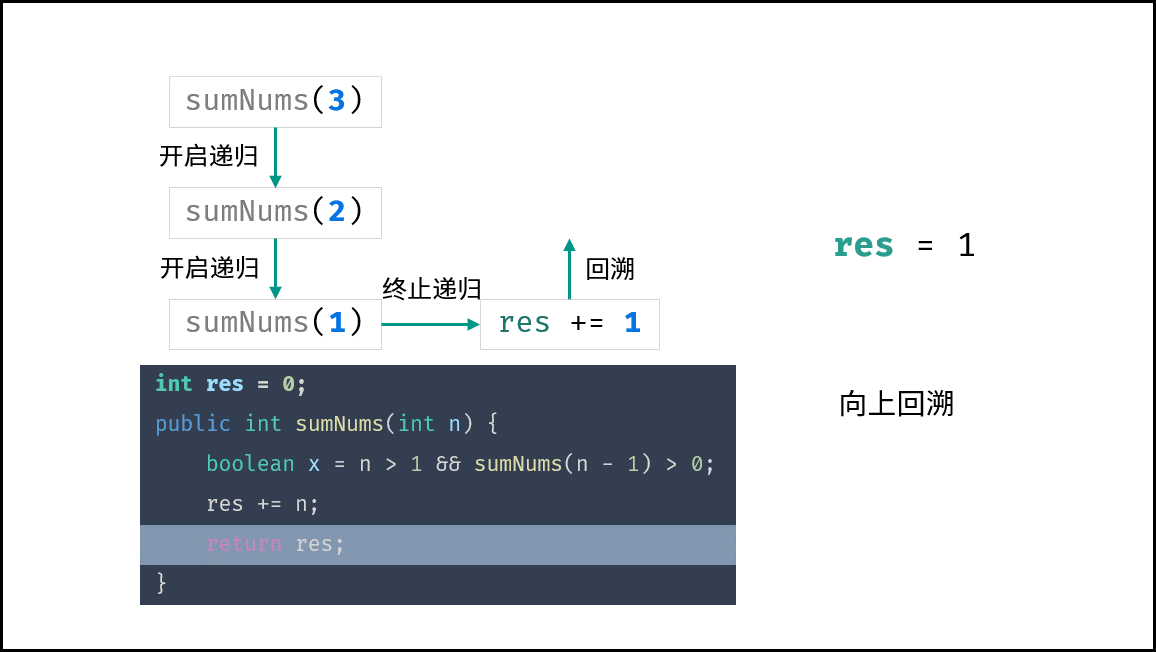 ,
,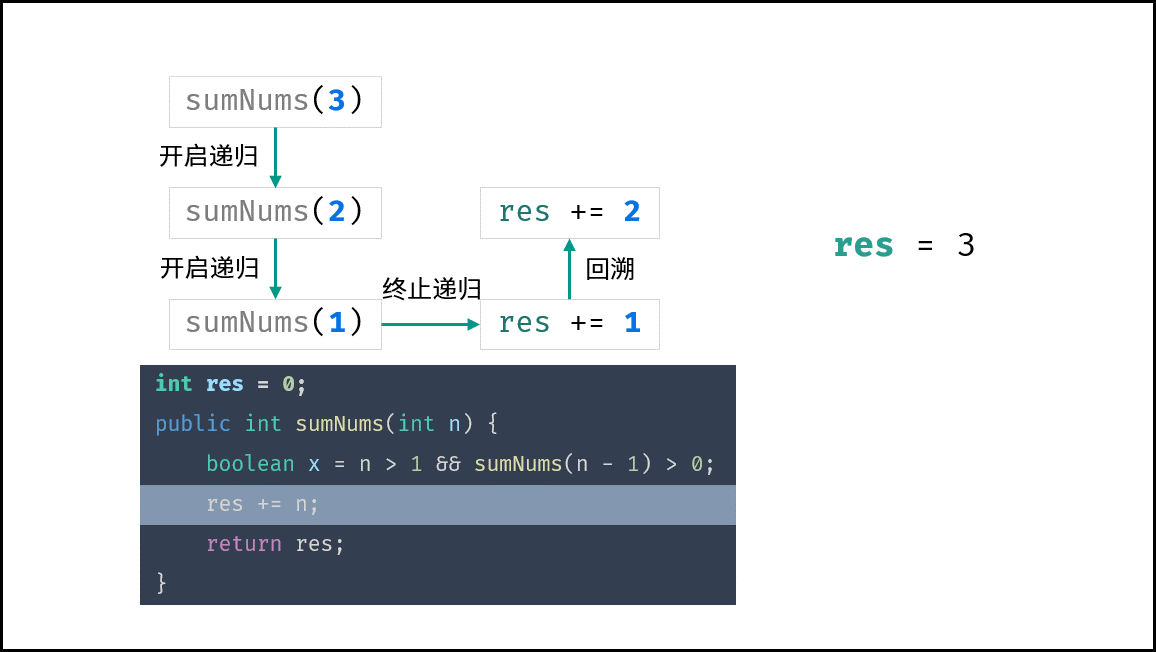 ,
,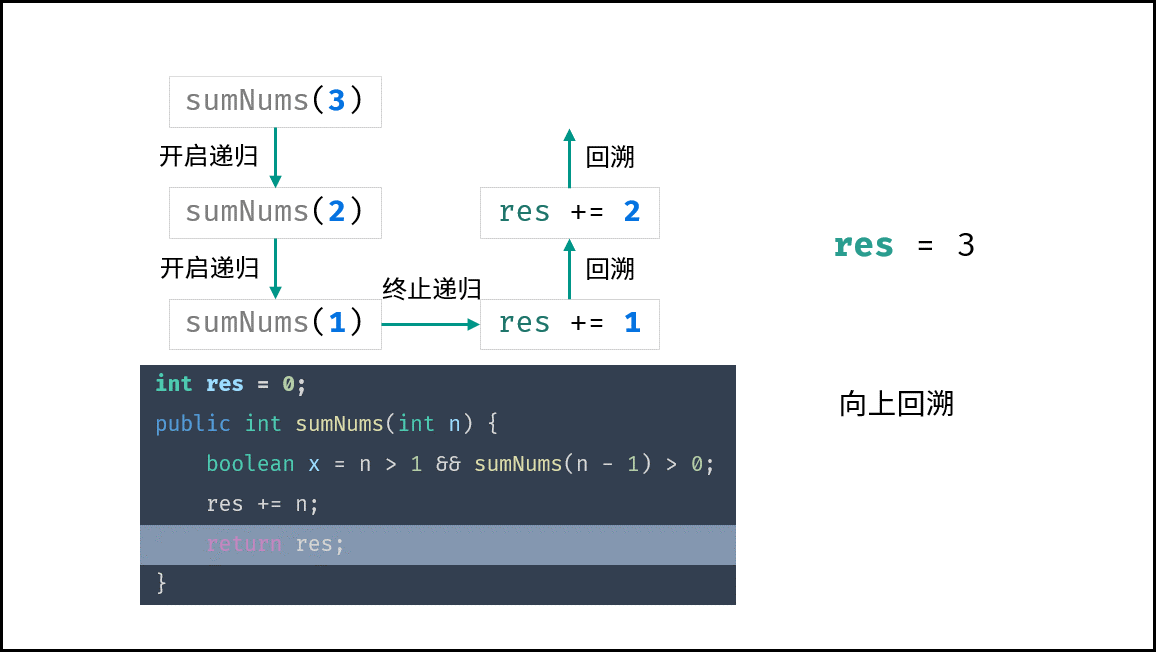 ,
,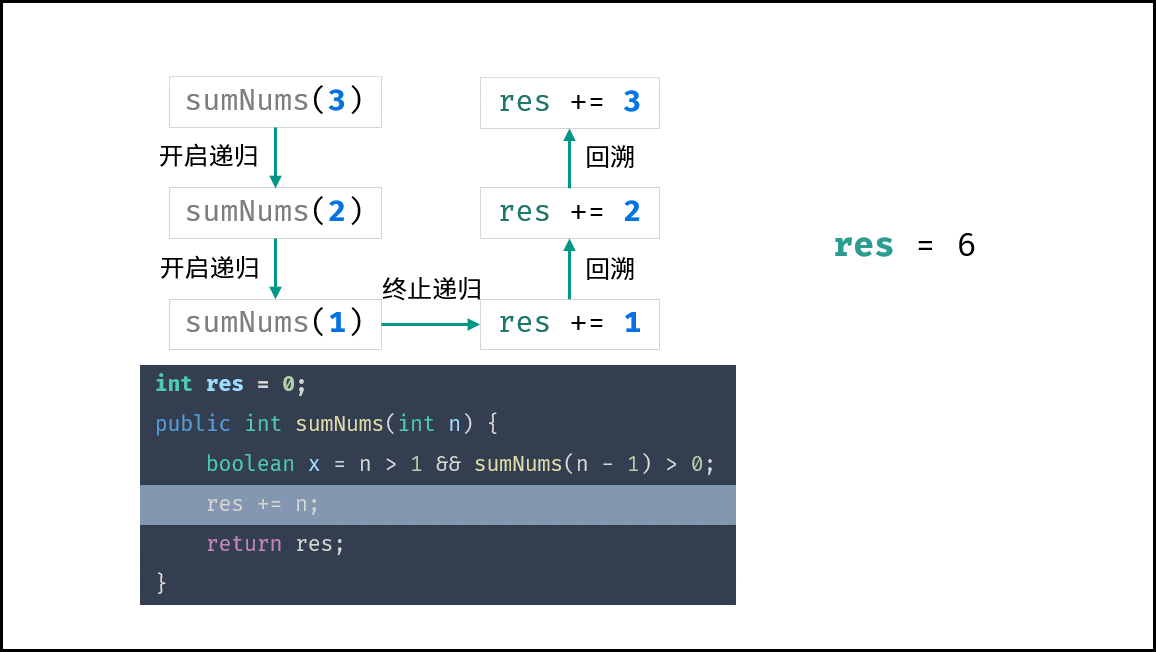 ,
,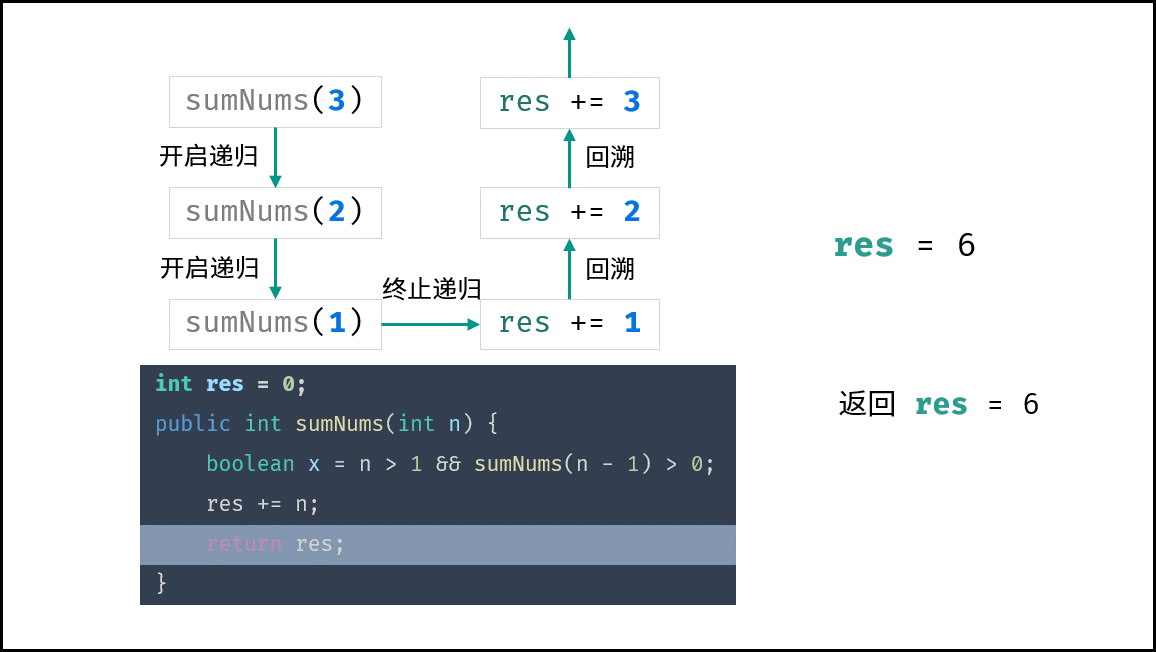 >
>
代码:
- Java 中,为构成语句,需加一个辅助布尔量 $x$ ,否则会报错;
- Java 中,开启递归函数需改写为
mechanicalAccumulator(target - 1) > 0,此整体作为一个布尔量输出,否则会报错; - 初始化变量 $res$ 记录结果。( Java 可使用第二栏的简洁写法,不用借助变量 $res$ )。
Java
class Solution {
int res = 0;
public int mechanicalAccumulator(int target) {
boolean x = target > 1 && mechanicalAccumulator(target - 1) > 0;
res += target;
return res;
}
}Java
class Solution {
public int mechanicalAccumulator(int target) {
boolean x = target > 1 && (target += mechanicalAccumulator(target - 1)) > 0;
return target;
}
}Python
class Solution:
def __init__(self):
self.res = 0
def mechanicalAccumulator(self, target: int) -> int:
target > 1 and self.mechanicalAccumulator(target - 1)
self.res += target
return self.resC++
class Solution {
public:
int mechanicalAccumulator(int target) {
target > 1 && (target += mechanicalAccumulator(target - 1));
return target;
}
};复杂度分析:
- 时间复杂度 $O(target)$ : 计算 $target + (target-1) + ... + 2 + 1$ 需要开启 $target$ 个递归函数。
- 空间复杂度 $O(target)$ : 递归深度达到 $target$ ,系统使用 $O(target)$ 大小的额外空间。